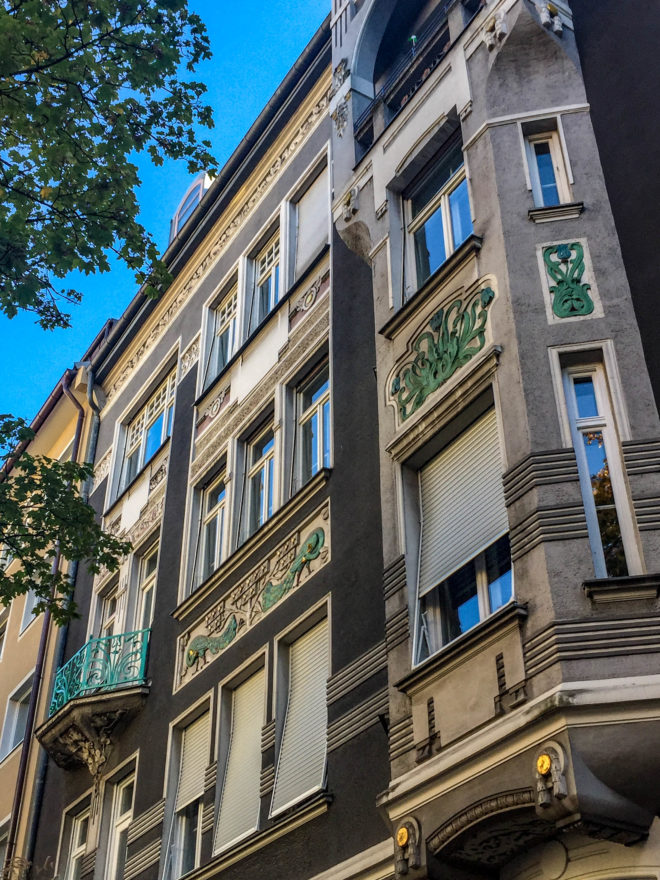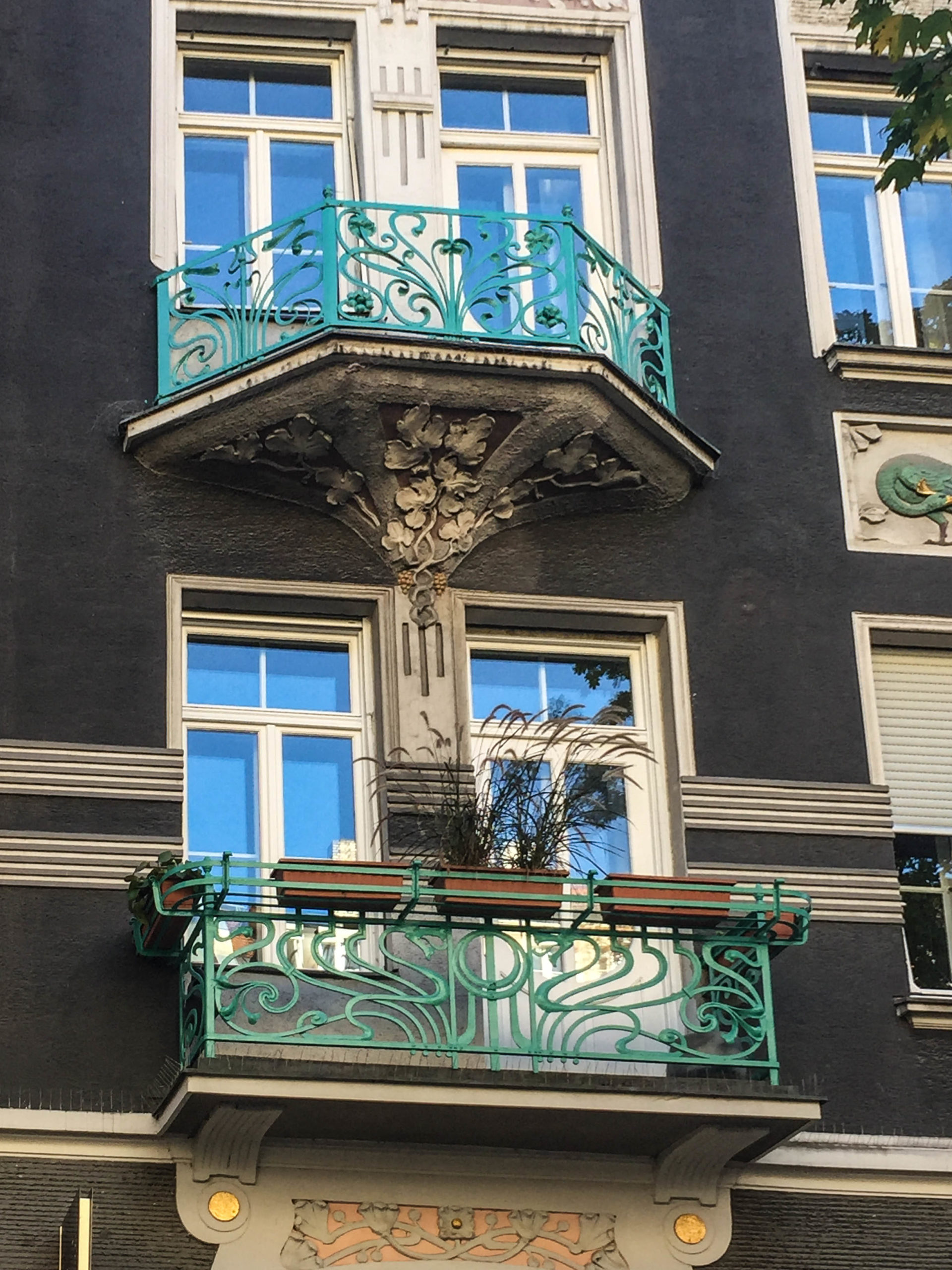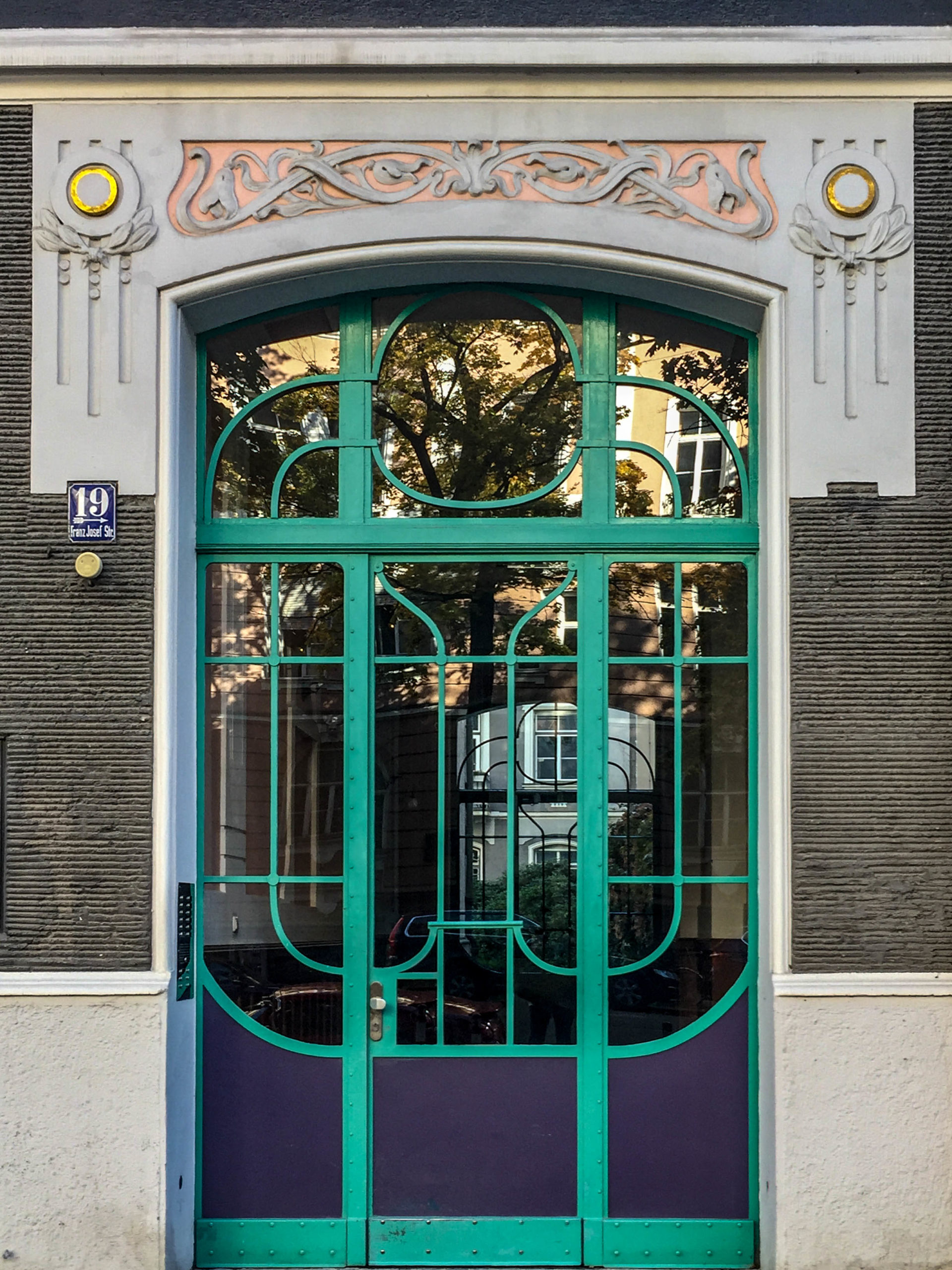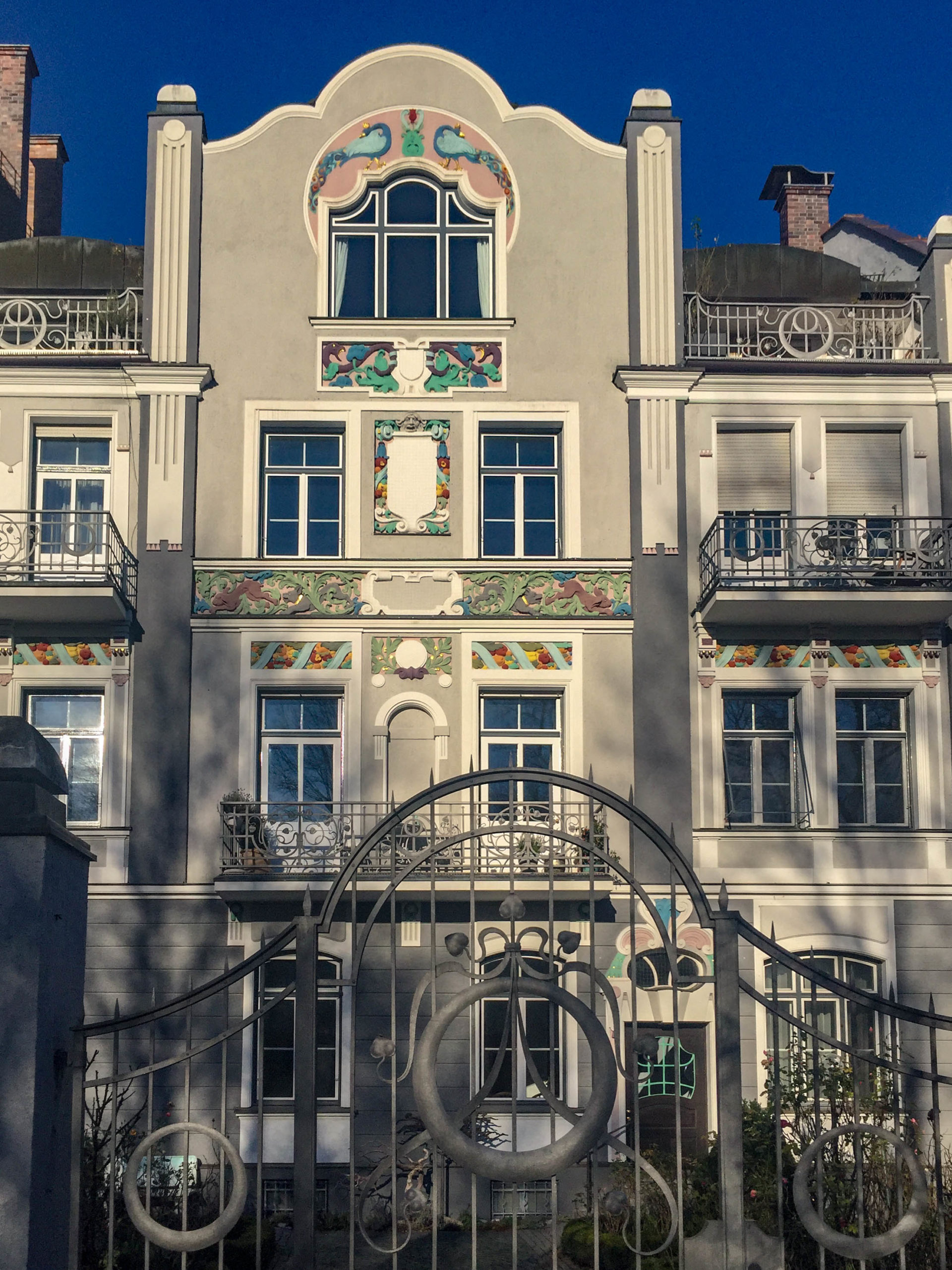1903
Architect: Ferenc Nyilas
Franz-Joseph-Straße 19, Friedrichstraße 18, Munich, Germany
The richly stuccoed apartment building in Art Nouveau style was built in 1903 according to plans by the Hungarian architect Ferenc (Franz) Nyilas.
Facade
On the facade of the front building and the rear building facing Leopold Park in Munich-Schwabing there are stuccoed peacock motifs and richly decorated moldings and elements.
Interior
Inside the house, the staircase banisters, the apartment doors, the stuccoed ceilings and the tiled stoves encased in Art Nouveau tiles have been preserved.
Schwabing
In 1890, with the incorporation, a building boom had begun in Schwabing. Numerous new apartment buildings were built, and the studio apartments on the top floors were ideal for artists.
The Academy of Art was nearby and numerous painting schools were located in Maxvorstadt, a neighboring neighborhood to the south of Schwabing.
Writers and poets
Literary figures and poets such as Frank Wedekind, Lion Feuchtwanger, Erich Mühsam, Stefan George and Oskar Maria Graf left their mark on the neighborhood. In addition, there were painters around the artists’ association Der Blaue Reiter, which included Wassily Kandinsky, Franz Marc, Paul Klee, Gabriele Münter and Marianne von Werefkin.
Simplicissimus and Jugend
In 1896, two influential magazines were launched – Simplicissimus and Jugend, which gave its name to the art movement of Jugendstil.
Wahnmoching
Countess Franziska zu Reventlow, who had thrown in the towel with her aristocratic family and led an unconventional life in Munich as the Countess of Schwabing, created a literary monument to the artistic scene in the novel Herr Dames Aufzeichnungen oder Begebenheiten aus einem merkwürdigen Stadtteil.
She invented the nickname Wahnmoching for Schwabing, which took into account both Schwabing’s village-like and idealistic character.











